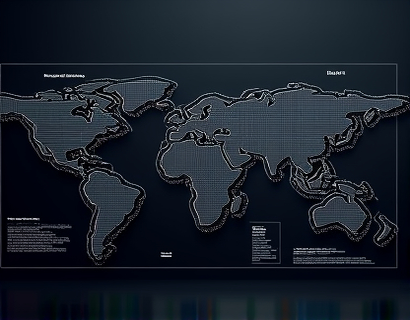Unlocking Insights in Graph Theory and Fluid Dynamics: Advanced Software Solutions for Researchers and Engineers
In the realm of complex system analysis, graph theory and fluid dynamics stand out as critical fields that drive innovation and performance optimization. Researchers and engineers in these domains face the challenge of managing and interpreting vast amounts of data, often requiring sophisticated tools to uncover hidden patterns and optimize system performance. Advanced software solutions have emerged to address these challenges, offering powerful capabilities that streamline data analysis, enhance visualization, and foster groundbreaking discoveries in mathematical modeling and fluid mechanics.
The integration of advanced software in graph theory and fluid dynamics has revolutionized the way professionals approach their work. These tools are designed to handle intricate computations and provide intuitive interfaces for data exploration. By leveraging these solutions, researchers and engineers can delve deeper into their data, uncover new insights, and push the boundaries of what is possible in their respective fields.
Graph Theory Software: Enhancing Network Analysis
Graph theory, a branch of mathematics that studies the properties of graphs, is fundamental in understanding and modeling complex networks. In various applications, from social networks to transportation systems, graph theory provides a robust framework for analyzing connections and dependencies. Advanced software solutions in this area offer a range of features that enhance network analysis.
One key feature is the ability to perform large-scale graph computations efficiently. Modern software can handle graphs with millions of nodes and edges, enabling researchers to work with real-world datasets that were previously too complex to manage. Algorithms for shortest path finding, community detection, and centrality measures are implemented with high performance, allowing for rapid analysis and insight generation.
Visualization is another critical aspect of graph theory software. Interactive and dynamic visualizations help users understand the structure and behavior of complex networks. Tools like force-directed layouts, hierarchical clustering, and multi-layer network visualizations provide a comprehensive view of the data, facilitating the identification of patterns and anomalies. These visualizations are not only useful for research but also for communicating findings to non-expert stakeholders.
Fluid Dynamics Software: Simulating and Analyzing Fluid Behavior
Fluid dynamics, the study of fluids in motion, is essential in fields such as aerospace, automotive, and environmental engineering. Simulating fluid behavior accurately and efficiently is crucial for designing optimal systems and predicting performance. Advanced software solutions in fluid dynamics offer powerful tools for solving the complex equations that govern fluid flow.
Computational Fluid Dynamics (CFD) software is at the forefront of this field, providing robust solvers for Navier-Stokes equations and other relevant models. These tools support both steady-state and transient analyses, allowing engineers to simulate a wide range of fluid scenarios. High-fidelity simulations can capture detailed flow phenomena, such as turbulence, boundary layers, and multiphase flows, which are critical for accurate predictions.
Mesh generation is a fundamental component of CFD software. Advanced meshing algorithms create high-quality meshes that adapt to the geometry and flow features of the problem at hand. Unstructured, structured, and hybrid meshes can be generated with ease, ensuring that simulations are both accurate and computationally efficient. Adaptive mesh refinement techniques further enhance the precision of simulations by dynamically adjusting the mesh resolution based on flow gradients.
Integration of Graph Theory and Fluid Dynamics
The intersection of graph theory and fluid dynamics presents unique opportunities for innovative research and application. For instance, graph-based methods can be used to discretize fluid domains, simplifying the computational burden while maintaining accuracy. This hybrid approach combines the strengths of both fields, enabling more efficient and accurate simulations.
In multi-scale modeling, graph theory can represent different scales of the system, from macroscopic to microscopic, while fluid dynamics software handles the detailed simulations at each scale. This integrated approach is particularly useful in studying complex systems like porous media, where fluid flow and transport phenomena are interconnected with structural properties represented as graphs.
Case Studies and Applications
One notable application of advanced software in graph theory and fluid dynamics is in the optimization of aerodynamic designs. Engineers use graph-based methods to model the complex geometry of aircraft surfaces and fluid dynamics software to simulate airflow around these surfaces. By combining these approaches, they can identify areas of high drag and optimize the design for improved performance and fuel efficiency.
In the field of environmental science, these tools are used to model and predict the dispersion of pollutants in water bodies. Graph theory helps in mapping the network of waterways and their interconnections, while fluid dynamics simulations predict how pollutants spread over time. This integrated analysis is crucial for developing effective environmental management strategies.
Challenges and Future Directions
Despite the significant advancements in software solutions for graph theory and fluid dynamics, several challenges remain. One major challenge is the scalability of algorithms to handle even larger and more complex datasets. As data volumes continue to grow, there is a need for more efficient algorithms and parallel computing techniques to maintain performance.
Another challenge is the user interface and usability of these advanced tools. While the underlying algorithms are powerful, they can be complex to use without proper training. Developing intuitive interfaces and providing comprehensive documentation and support are essential for making these tools accessible to a broader audience.
Looking ahead, the integration of machine learning and artificial intelligence into graph theory and fluid dynamics software holds great promise. Machine learning can enhance parameter estimation, model reduction, and anomaly detection, while AI can automate many aspects of the analysis process. These advancements will further empower researchers and engineers to extract deeper insights and drive innovation in their fields.
Conclusion
Advanced software solutions in graph theory and fluid dynamics are transforming the way researchers and engineers approach complex system analysis. These tools not only streamline data analysis and enhance visualization but also open up new avenues for discovery and optimization. By leveraging these technologies, professionals can unlock new insights and push the boundaries of what is possible in mathematical modeling and fluid mechanics, ultimately leading to significant advancements in their respective domains.










































